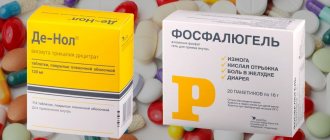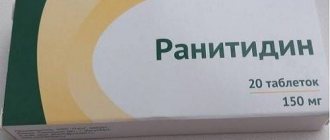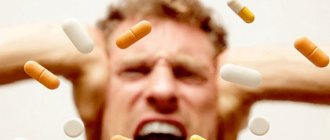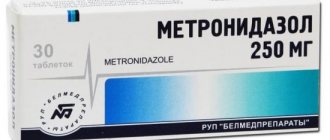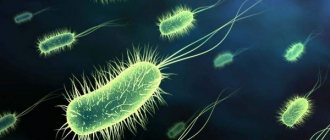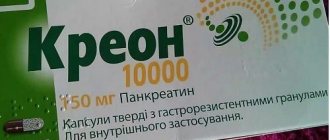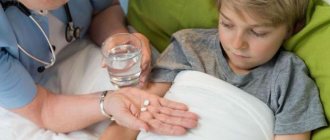Antibiotic therapy plays a key role in the treatment of various diseases caused by bacterial pathogens. Since the beginning of their use (in the 40s of the last century), the mortality rate of these pathologies has decreased significantly. And although microorganisms gradually develop resistance to many of their representatives, pharmaceutical companies regularly synthesize new generations of antibiotics.
However, in addition to their positive effects, these drugs often cause side effects. The most common of them is a violation of the normal microflora of the stomach (dysbacteriosis), which is manifested by dyspeptic symptoms. And then the question arises, what can you drink with antibiotics to improve intestinal microflora.
The effect of antibiotics on the human body
First, it’s worth finding out why treating a person with antibiotics can lead to intestinal dysfunction. According to experts, the adult body contains about 2-2.5 kg of beneficial microorganisms, which amounts to hundreds of trillions of bacteria. They are our constant companions, help digest food, create a favorable acid-base environment, improve the absorption of vitamins and nutrients, protect against harmful microbes and infectious diseases.
When taking antibiotics, the bacteria necessary for the normal functioning of the body suffer no less than those that harm human health. Powerful antibacterial drugs have a detrimental effect on both “bad” and “good” microorganisms. As a result, the intestinal microflora suffers (microbiocenosis) and antibiotic-associated diarrhea develops.
The adverse effects of antibiotics on the intestines do not affect everyone. This depends on what antibiotics the doctor prescribed, as well as on the patient’s health status, his immunity and the duration of antibiotic therapy. According to doctors, at least a third of people taking quinolones, macrolides, cephalosporins, lincomycins and aminopenicillins experience problems with the gastrointestinal tract. And this happens regardless of whether the patient has a sore throat, pneumonia or inflammation of the intestines - antibiotics harm beneficial microflora and provoke the appearance of dysbiosis.
How to protect the digestive organs from the harmful effects of antimicrobial drugs? Intestinal upset, which is always accompanied by abdominal pain and diarrhea, can be prevented if, while taking antibiotics, you take a medicine that supports the intestinal microflora.
Types of antibiotics
Antibiotics are divided into different groups
Antibiotics are divided into several categories according to:
- nature of the impact
- action spectrum
- method of obtaining
- direction of action
- chemical structure
There are two ways to influence bacterial cells: in the first case, the drug suppresses the growth and reproduction of pathogenic microorganisms, as a result of which the immune system copes with the bacteria on its own. In the second option, the bacteria are completely destroyed.
Based on their spectrum of action, antibiotics are divided into drugs with a narrow and broad spectrum of action. For most diseases, doctors prescribe a wide range of medications. An exception applies to anti-tuberculosis antibiotics, which fight a specific type of bacteria.
Antibacterial medications are produced in three ways:
- natural - grown from fungal mold;
- semi-synthetic - isolated in natural conditions, but modified with chemicals to enhance the effect;
- synthetic - obtained exclusively by chemical means.
Based on the direction of action, antibacterial drugs are divided into three types: antibiotics for infectious diseases, antitumor drugs and antifungals. However, regarding the latter, doctors are still debating whether they should be put on a par with antibacterial agents.
Antibiotics are divided according to their chemical composition:
- Beta-lactams are typical representatives of penicillin and cephalosporin, which have a wide spectrum of action;
- tetracyclines - used against severe infections such as anthrax;
- chloramphenicol - cause the death of intestinal pathogenic bacteria, the causative agent of meningitis;
- macrolides - have a detrimental effect on ureaplasma, chlamydia and other intracellular parasites;
- glycopeptides are a new generation antibiotic that is active against most pathogens of infectious diseases.
The invention of antibiotics revolutionized medicine and made it possible to treat previously incurable diseases.
Learn about the emergence of antibiotics from the proposed video.
Types of drugs for intestinal microflora
What should I take along with antibiotics to protect myself from their negative effects on the intestinal microflora? Doctors prescribe probiotics and prebiotics for this purpose.
Probiotics are medications containing strains of live bacteria. Once inside the intestines, beneficial microorganisms populate the mucous membranes and, under favorable conditions, begin to actively multiply. And other drugs help them with this - prebiotics. Prebiotic supplements contain components that create a breeding ground for beneficial bacteria and accelerate colony growth.
Currently, probiotics containing various strains of bacteria are produced. These can be either single-component preparations, in which only one specific type of microorganism is present, or multicomponent preparations, containing simultaneously two or more strains of bacteria.
Most common gut probiotics include:
- aerococci;
- bifidobacteria;
- yeast-like fungi;
- lacto- and colibacteria;
- enterococci.
In addition, the tablet or capsule may also contain prebiotic additives that help beneficial bacteria “take root” in a new place.
Important! Combined probiotic agents are preferable for restoring intestinal microflora after antibiotics. However, only a doctor can accurately determine which specific probiotic to prescribe in each specific case.
How do antibiotics affect the stomach?
The stomach is one of the most vulnerable organs of the human body, since all substances and foods that a person consumes orally (through the mouth) pass through it. The stomach is a hollow muscular organ, the volume of which is about 0.5-0.6 liters. The inside of the stomach wall is lined with epithelial tissue and mucous membranes, which protect them from the aggressive effects of hydrochloric acid.
Anatomy (structure) of the stomach
Antibiotics, once in the stomach, can damage the mucous membranes and disrupt their integrity. If used too frequently and for a long time, drugs in this group can corrode the epithelial layer of the gastric wall and cause deep erosions and ulcers, so patients with chronic diseases of the digestive system, ulcerative colitis, and peptic ulcers should use them strictly as prescribed by the doctor in the indicated dosage.
The second danger of uncontrolled antibiotic treatment is the development of intestinal dysbiosis. After the active substance of the drug enters the gastrointestinal tract, it begins to destroy the membrane membranes of bacteria, which leads to disruption of vital processes and their death. All drugs with antibacterial and bactericidal effects destroy not only pathogenic and opportunistic flora, but also beneficial microorganisms, without which normal digestion is impossible.
Symptoms of dysbiosis
If this condition is not corrected, serious consequences are possible, including:
- chronic abdominal pain and digestive disorders (bloating, increased gas formation, bowel dysfunction);
- reducing the body's resistance to viruses and bacteria;
- deterioration in general health (weakness, drowsiness, chronic fatigue syndrome);
- skin diseases;
- growth and development retardation (in children);
- active growth of pathogenic flora in the genitourinary system.
Side effects of antibiotics
Important! In order for the stomach and intestines to function normally after treatment with antibiotics, it is necessary to take prebiotics. They should be taken from the first day of antibiotic therapy.
Benefits of probiotics
Probiotic preparations have a beneficial effect not only on the digestive organs - the entire body begins to function more harmoniously:
- the harmful effects of antibiotics on the walls of the stomach are reduced;
- enzymes, hormones and vitamins necessary for the normal functioning of the human body are produced;
- the negative impact of toxins is minimized;
- water-salt metabolism in the intestines is restored;
- the body's defenses are stimulated, its resistance to disease increases;
- the acidity level of the stomach and the entire digestive system is normalized, in which pathogenic bacteria die faster and beneficial bacteria multiply better;
- intestinal microbiocenosis is restored;
- the digestion process is stimulated;
- intestinal motility improves.
All this clearly proves that drinking probiotics to prevent antibiotic-associated diarrhea is simply necessary. Otherwise, the patient faces diarrhea or constipation, bloating, nausea and pain in the abdominal area.
Important! Microbiocenosis can recover on its own after antibiotic therapy is discontinued. However, this process is not fast and depends on the person’s immunity. Therefore, you should not neglect the advice of doctors and save on your health. It is better to take a course of probiotics so that after the main infectious disease you do not also have to treat dysbiosis.
Why is it necessary to protect the stomach from antibiotics?
The thing is that the antibiotic, having a semi-synthetic or natural origin, suppresses the growth and reproduction of bacteria in the human body. The problem lies in the fact that this type of drug generally does not act selectively, which leads to the fact that in the process of fighting pathogenic bacteria, damage is caused to beneficial bacteria, of which there are many in the human body, as well as to the human body as a whole. The main blow of all antibiotics, without exception, is taken by the gastrointestinal tract, namely the digestive system.
This fact is explained by the fact that in most cases, antibiotic drugs are taken in the form of tablets or capsules orally. By destroying bacteria, antibiotics make the human stomach extremely vulnerable, which can lead to
diarrhea,
flatulence,
sharp pain in the abdominal area,
and also cause vomiting and nausea.
The basic rule of taking antibiotics to protect the stomach
But the most important thing in protecting the stomach from antibiotics is a complete and unconditional refusal of self-treatment. Having a number of side effects, and being perhaps the most effective means in the fight against most diseases, antibiotics can cause irreparable harm to health if they are taken incorrectly.
Therefore, before taking such strong drugs, it is imperative to consult a doctor.
Fields marked *
required. HTML tags are disabled.
Very often, having determined the cause of the patient’s illness, the doctor may prescribe antibiotics. These drugs should be used strictly according to medical recommendations, otherwise the treatment process is unlikely to be effective. In this case, it is necessary to adhere to certain rules that determine how often antibiotics can be taken, the dosage of the drugs, and also take into account some other features.
List of probiotics
Drugs that restore the intestines after antibiotics represent a fairly large group of drugs. Below is a list of the most effective probiotics, according to reviews from doctors and patients:
Perhaps the most popular medicine from the category of multicomponent probiotics. Almost everyone hears it thanks to mass television advertising. Linex capsules contain bifidobacteria, lactobacilli and strains of enterococci. It is prescribed to both adults and children, as the drug is safe and has no contraindications. Linex is not prescribed only for the treatment of patients suffering from lactose intolerance.
Prescribed to eliminate manifestations of dysbiosis and digestive disorders of various etiologies, including when taking antibiotics to restore intestinal microflora. The drug is available in the form of capsules that are resistant to stomach acid. The capsules contain acidophilic lactobacilli and strains of kefir fungus, which acts as a prebiotic. When colonized in the intestines, beneficial bacteria eliminate the symptoms of dysbiosis, indigestion, intestinal infections and food allergies.
The drug is prescribed to restore microbiocenosis when antibiotics are prescribed to treat the intestines or other infectious diseases. The medicine is available in the form of drops and eliminates various disorders of the digestive tract (diarrhea, constipation, flatulence, nausea and others). The probiotic can be pre-diluted with tea, orange juice or water, but cannot be combined with milk and dairy products.
As an active component, it contains lyophilized cells that inhibit pathogenic microorganisms and eliminate the symptoms of diarrhea. The medicine can be taken even by the youngest patients from the moment of birth.
Probiotics are available in different dosage forms. These may be capsules, tablets, powders, drops or syrups. The doctor selects the optimal form of the drug to take individually, taking into account the patient’s condition and age. In addition, each popular drug has a lot of analogues. For example, instead of Linex, a doctor may prescribe:
- Bifidumbacterin;
- Lactobacterin;
- Laktomun;
- Biolact;
- Biosporin;
- Bificol;
- Lactiale;
- Normobakt.
Restoring intestinal microflora with folk remedies
After long-term use of antibiotics, it is possible to restore the microflora with some folk remedies.
Important! Of course, before using these, you need to consult with your doctor - perhaps he will give permission for such procedures, or perhaps reveal the need to take only the above drugs.
Chamomile, eucalyptus, sage and St. John's wort are medicinal herbs that have antimicrobial effects. To restore microflora, you can drink decoctions from these plants. Raspberry and strawberry fruit drinks have a similar effect.
Often, a violation of the intestinal microflora after taking antibiotics is manifested by constipation, and in this case you can take senna and aloe - these medicinal plants can enhance intestinal motility. It is worth paying attention to the fact that when consuming senna, a side effect may occur, namely abdominal pain.
In case of diarrhea, oak bark, a decoction of burnet and pomegranate peels will help. These listed medicinal plants have a fixative effect. But you need to be as careful as possible when taking these plants, since exceeding the dosage can lead to the development of constipation, and this is also considered a disruption of the intestines.
Honey has an excellent antimicrobial effect. This product is not only capable of destroying pathogenic microorganisms, but also enhancing intestinal motility.
In case of disturbances in the intestinal microflora, which occurs in all cases of taking antibiotics, it will be useful to swallow one clove of garlic whole, without chopping it. You need to consume garlic once a day; to enhance the restorative effect, it is recommended to drink garlic with any fermented milk product.
There are many options for improving the functioning of the body after taking antibiotics. But the answer to the question “what to take to restore microflora after antibiotics” should be given by a specialist - he will be able to realistically assess the state of the digestive system, exclude any intestinal pathologies, and take into account possible allergic reactions.
26, total, today
Inflammation of the gut and probiotics
Antimicrobial drugs are also prescribed for various diseases of the digestive tract. Antibiotics are indispensable for intestinal inflammation caused by the proliferation of pathogenic microflora. The symptoms and treatment of the disease are similar to antibiotic-associated diarrhea.
Treatment of colon diverticulosis in adults also involves the prescription of broad-spectrum antibiotics. Often, with intestinal diverticulosis in the initial stages, the patient does not have any pain, and diverticula (pouch-like protrusions in the wall of the colon) can be discovered completely by accident. The diagnosis itself is not dangerous to the patient’s health. However, over time, the disease leads to the development of inflammatory processes characteristic of this pathology.
In both cases, complex therapy includes the administration of probiotics to normalize and support the intestinal microflora. But what is the best medicine to take, the doctor must determine, since self-medication is fraught with adverse consequences.
Probiotics and prebiotics for the gut
These drugs consist of bacteria natural to the human body, which actively colonize the intestines after entering it. You can take medications from this group not only during the period of active restoration of the digestive tract, but also at the same time as antibiotics.
Bificol
The drug Bifikol
You can take this medicine from as early as six months. For children, the dose should be selected by a pediatrician. Adults take Bificol for any intestinal disorders; it is not used for colitis. The dosage of the medication is 5 doses of the active substance in the morning and evening, in severe cases it is taken three times. The duration of treatment is 21 days.
Hilak Forte
Release form of the drug Hilak Forte
The drug belongs to the class of prebiotics. Restores the intestinal mucosa and inhibits the growth of pathogenic bacteria. Accepted from the first days of life. From the age of 12, Hilak Forte is taken in a dose of 40-60 drops of suspension with a break of 5-8 hours. Treatment takes one month, the medication must be taken before meals, and should not be taken with milk.
Linex
Probiotic Linex
A popular probiotic for the treatment of adults and children. Can be taken from six months of age. Patients over 12 years of age drink Linex in a dosage of two capsules three times a day. The duration of therapy is selected for each patient individually; treatment usually takes three weeks.
Rules for taking probiotic drugs
The effectiveness of taking probiotics directly depends on the quality of the drug, compliance with the rules of its storage and administration. Therefore, every person should know what to do and how to take “live” medicines correctly so that the benefits from them are tangible.
The rules for taking probiotics are simple and easy to follow even for the most undisciplined patient:
- You need to take exactly the drug prescribed by the doctor. Only a doctor is able to correctly assess the clinical picture and health status of the patient and prescribe the “right” medicine, taking into account the characteristics of its effect on the body.
- Take the probiotic exactly according to the included instructions. It is important to follow the recommendations regarding dosage and time of administration (before, after or during meals).
- Do not take probiotics with hot water. The maximum permissible temperature of the drink is 45°C - at a higher temperature, beneficial microorganisms will die.
- Do not stop taking probiotics after completing the course of antimicrobial therapy. Doctors recommend continuing to take medications for some time after taking antibiotics. This is necessary in order to completely restore the functioning of the stomach and intestines. The period of time during which it is necessary to take “live” medications is determined by the attending physician.
- Quit alcohol and smoking. During treatment, you have to think about health, and not about the dubious pleasure of drinking alcohol and cigarettes.
Important! For any disease, you should not take antibiotics and probiotics at the same time of day. These drugs should be taken with a minimum difference of 2 hours. Otherwise, strains of beneficial bacteria will die under the influence of antimicrobial drugs.
Taking antibiotics and the stomach
Antibiotics adversely affect the digestive organs, causing pain, diarrhea, and vomiting. Sometimes the influence of such drugs is too strong, but changing them is not advisable due to the uniqueness of the medicine. In this case, doctors carry out preventive measures that will help protect the body from negative consequences.
Measures to protect the stomach when taking antibiotics
Antibiotics, causing enormous harm to digestion, are an integral part of the treatment of many inflammations; safer and more effective analogues do not exist.
Therefore, special rules have been developed, adhering to which you can protect the stomach from the harmful effects of the antibiotic, reduce pain and other negative symptoms.
These are recommendations that reduce the possibility of side effects.
The most important rule for inflammation is to take antibiotics according to the instructions for use and doctor’s recommendations. Taking antibiotics on an empty or too full stomach is strictly prohibited, as this will make it hurt even more.
Do not take antibacterial agents with juice, coffee or tea. It is better to use clean boiled water for this. Another method of protection is the use of special medications, the purpose of which is to restore the body’s microflora.
It is useful to consume complexes of vitamins and minerals.
There is much less harm from drugs to the gastrointestinal tract if they are administered intramuscularly. Infusions and decoctions of herbs, such as chamomile, are recommended.
Compliance with medication rules
Taking medications according to the rules is a sure way to reduce their side effects. Therefore, it is so important for the stomach that a doctor prescribe antibiotic therapy. Self-medication with such drugs can greatly harm the patient.
Despite the effectiveness of such drugs for inflammation, harm from improper use can damage not only the digestive organs, but also the health of the patient in general.
This is why a doctor never prescribes antibiotics without conducting diagnostic procedures.
Diet while taking medications
Drinking an antibiotic on an empty stomach is prohibited.
Drinking an antibiotic on an empty stomach is prohibited. If there is a lot of food in the stomach, it is difficult for it to cope with the medicine. Before taking the medicine, you need to have a snack.
It is better to use products that have an enveloping effect for such a snack. They reduce irritation from the antibiotic in all digestive organs. Examples of healthy dishes: jelly, porridge, soup, boiled vegetables.
It is better to avoid spicy and salty foods while you are treating the disease, as they affect the stomach even more than usual. Diet is an important step in protecting the digestive system. The likelihood of stomach pain decreases with proper nutrition.
Replacing tablets with injections
If the patient does not tolerate oral medications well or the child refuses to take pills, the inflammation is treated with intravenous or intramuscular injections.
Treatment in this way is less pleasant, but the harm when taken is reduced, since the stomach and intestines are not involved in absorption. The injections must be given by a specialist so as not to cause harm.
This method of administration makes the action of antibiotics more effective.
Taking probiotics
Often, in parallel with antibiotics or after a course of therapy, probiotics are prescribed, which restore the microflora in the intestines, which speeds up the recovery process. Drugs such as Linex are prescribed, and for children, Laktiale.
Stomach recovery after therapy
To minimize stomach problems after inflammation, you must adhere to the rules of intake and proper nutrition during therapy. But if stomach pain still occurs, recovery procedures are recommended.
If you have a disease that needs to be treated with antibacterial agents, you need to think in advance about how not to harm yourself; you definitely need protection.
After the course of treatment, you need to restore the body so that a number of other diseases do not arise against this background.
To recover after taking medications, it is recommended to take biological products that affect microflora, immunomodulators, vitamin complexes, adaptogens and diet. Stomach pain is a serious problem, which is primarily treated with diet.
Along with the diet, special therapy is carried out to improve the functioning of the digestive system. This requires lactobacilli and bifidobacteria. Sometimes bacteriophages or an immunomodulator that affects pathogenic microorganisms are used. If your stomach hurts after antibiotics, a set of procedures is necessary to normalize the condition.
Elimination of dysbacteriosis
In case of dysbacteriosis, only a doctor can prescribe treatment. Therapy consists of populating the intestines with beneficial bacteria.
When using medications, you should strictly adhere to the doctor’s recommendations and instructions for use. It is important to remember the course of therapy and dosage, especially when treating children.
Sometimes probiotics need to be taken not only orally. They are prescribed in the form of gargling, nasal drops or rectally.
Recovery diet
The duration of the diet is more than 3 months. To normalize the flora of the body, yeast bread, sugar and pastries are excluded from the diet. The amount of milk and potatoes should be greatly limited. Sour milk, garlic, cottage cheese, and raw vegetables are welcome, as they contain beneficial bacteria.
Taking a vitamin-mineral complex
Due to dysbiosis, the process of absorption of nutrients from food is disrupted, therefore, especially if a person has taken several courses of antibiotics or a child has taken them, a complex of vitamins and minerals is most often needed. Such actions will prevent vitamin deficiency.
Use of herbal remedies and medicinal herbs
After taking antibiotics, herbal remedies can help you get back into shape. It is healthy to drink green teas with lingonberries. Cranberry juice or apple and rose hip juice have a beneficial effect.
It is useful to take warm cabbage brine (from 5 g twice a day to 100 g at a time). Garlic is very useful. It affects the intestinal mucosa. For stomach diseases, you can drink garlic capsules.
It is sold at the pharmacy.
Taking enzyme preparations
Therapy with beneficial bacteria after a course of treatment is the same as simultaneously with treatment with antibacterial agents. They should be prescribed by a doctor after the tests.
They will help restore the microflora of the stomach and intestines.
Source: https://TvoyZheludok.ru/lechenie/traditsionnoe/zashhita-zheludka-pri-prieme-antibiotikov.html
Diet correction
Restoring microbiocenosis is impossible without changing the diet and following a special diet. Of course, it is better to discuss this issue with your doctor. Below are general recommendations:
- Exclude spicy, fatty, fried and smoked foods from the daily menu.
- Steam, bake in the oven or stew.
- Avoid high carbohydrate foods.
- Drink about 2 liters of clean water daily.
- Consume foods containing carbohydrates in the first half of the day.
- Increase the amount of plant fiber and protein foods.
- Eat more often and in small portions.
- Balance the diet taking into account the amount of calories needed for a particular individual.
You can also improve your intestinal microflora with certain foods. It is especially useful when patients take fermented milk products:
- natural sourdough yogurt;
- acidophilus kefir;
- cottage cheese;
- feta cheese;
- buttermilk.
In addition to the listed products, fruits and dried fruits, legumes, cereal porridges, green tea and light broths are useful. But it is better to exclude baked goods, sweets, jelly, black tea, sweet soda, fresh cabbage, mushrooms, meat and meat products from your menu.
Treatment with folk remedies involves the inclusion in the diet of fresh fruit and vegetable juices, which have a good effect on the microbiocenosis. Decoctions and infusions of medicinal herbs are also useful. Depending on the condition of the stomach and intestines, they drink chicory, sage, oak bark, yarrow, flax seed, St. John's wort, chamomile, calendula, and nettle.
It is not difficult to maintain intestinal microflora when taking antibiotics. It is enough to start drinking probiotic preparations from the first day of antimicrobial therapy. At the same time, you need to balance your diet, take care of personal hygiene and give up bad habits. An active lifestyle, exercise, daily walks in the fresh air and psychological balance are also beneficial.
Antibiotics are a group of drugs that are used to treat infectious diseases. They contain substances of natural or synthetic origin, which in small concentrations inhibit the reproduction and growth of pathogenic bacteria. However, antibiotics also negatively affect the normal intestinal microflora. Patients often experience abdominal pain, nausea, and upset bowel movements.
How to take antibiotics correctly so as NOT to disturb the intestinal microflora
Photo https://24tv.ua
You will learn two simple rules that allow you to avoid the negative effects of antibiotics by reading this article:
Antibiotics are a group of drugs that slow down or suppress the proliferation of microbes in the body.
Why are antibiotics dangerous?
The main dangers of antibiotics are that:
- they can form resistance (resistance) of microorganisms to drugs; that is, in fact, as a result of mutations, a new type of bacteria is obtained that has a gene for resistance
to a given antibiotic and further treatment of this disease with this antibiotic becomes meaningless
:
does NOT
on
this
microbe .
There is a term “nosocomial microflora” - these are groups of microbes that were formed under the influence of factors unfavorable to them (chlorine, antiseptics, antibiotics, quartz, ...) and they are characterized by MEGA resistance to drugs. - Also, the use of antibiotics disrupts the balance of intestinal microflora. Antibiotics kill everything: both dangerous and beneficial microbes living in the intestines (read more here: ** CLICK! ))
WHAT happens if antibiotics are NOT used?
Cause 90%
diseases –
infection
or
its complications.
(Only
10% of diseases are caused by injury and heredity)
Before the industrial production of antibiotics began in 1943 2
out of
five
surgical interventions ended in death from secondary infection. Many diseases that can be treated in a couple of days today were considered incurable.
The most severe complications were caused by such common
diseases as:
A typical infectious disease, familiar to almost everyone, is
a sore throat (sore throat, fever, ...).
Complications: heart disease (endocarditis), kidney disease (pyelonephritis, nephrosis, ...), joint disease (arthritis, arthrosis).
Today we can observe these complications in almost all older people who grew up at a time when antibiotics were poorly available.
The consequence of an untreated
genitourinary infection is urinary incontinence, discomfort when urinating - it was these complications that suffered from the All-Russian Emperor Peter I
and it was they that
caused his death at the age of 54.
Autoimmune diseases
are complications after previous and untreated infections, when the immune system “ goes crazy ” and begins to destroy the tissues and organs of its body.
Skin injuries
cover often led to
Sepsis - blood poisoning.
Venereal diseases were widespread
diseases (syphilis, gonorrhea, ...)
The problem with
NOT using or not using antibiotics in a timely manner is that the infection causes an inflammatory process that does NOT reversibly disrupt the morphology (structure) of tissues at the site of its localization (location): the longer the inflammatory process lasts, the more “deformation” the tissues undergo.
Violation of the structure of tissues leads to disturbances in their functions. Typical examples:
- furunculosis
- purulent inflammation of the skin, after which scars remain on the skin that do NOT tan and darken in the cold - the longer the furunculosis lasted, the larger the area of skin was affected;
– arthritis
– a disease of the joints, in which a painful “ bump ” and their mobility is impaired – the longer the inflammation lasted, the more joints were damaged
If the intestinal microflora can be
restored
without any problems
(read more
here: ** CLICK! )) ,
then restoring the morphology of tissues and their functionality is
unlikely.
This means that you should NOT avoid using antibiotics WHERE you cannot do without them.
HOW to use antibiotics correctly?
The use of antibiotics is determined by factors such as diagnosis, age and concomitant diseases of the patient, which group the antibiotic belongs to (there are more than a dozen of them), ...
Of course, in each specific case, the treatment regimen will be different and the solution
This should be discussed by a doctor.
BUT!
There are two general mandatory rules for everyone:
RULE 1.
During the period of taking antibiotics, you must exclude fatty, fried and spicy foods
food, as well as alcohol - so as
not to unnecessarily “
load
”
the liver.
RULE 2.
During the period of taking antibiotics it is necessary
take
probiotics.
Each pharmacy will have
at
least two types of them.
Choose the one that is more convenient for you to use :
in the form of capsules, or sachet, or solution, ... (liquid is better for children).
IMPORTANT !!!
Taking probiotics should be stopped
no
earlier than
2 weeks after stopping
the antibiotic.
WE RECOMMEND READING:
- How to restore and maintain normal intestinal microflora
- Oncology: WHO will be able to avoid it?
- The right bed
- Anemia: why does hemoglobin NOT rise?
- Self-examination: liver condition
B
stay
healthy
ALWAYS !
If the article was useful to you, please give it a THING UP and subscribe to our channel. THANK YOU !
Source: https://zen.yandex.ru/media/juvenal/kak-pravilno-prinimat-antibiotikichtoby-ne-narushat-mikrofloru-kishechnika-5dd8acb80c408a20fc3f3065
When is dysbacteriosis prevention needed?
When taking antibiotics, the functioning of the gastrointestinal tract is disrupted in 5-25% of cases. The frequency of side effects depends on the drug group and the individual characteristics of the patient. Dyspeptic disorders in the first days of treatment occur due to the toxic effect of the drug on the mucous membrane of the stomach and intestines. Complaints that appear towards the end of the course of therapy, or shortly after it, are associated with changes in microbiocenosis.
Broad-spectrum antibiotics inhibit the activity of beneficial bacteria. Opportunistic flora begins to actively multiply. Intestinal dysbiosis develops. Digestion and vitamin synthesis are disrupted. Toxins accumulate in the colon, irritate its walls, and are then absorbed into the blood. The immune status suffers, allergic reactions occur. The severity of clinical manifestations depends on the compensatory capabilities of the body.
According to statistics, only 20% of all gastrointestinal disorders that appear during treatment with antimicrobial drugs are associated with dysbiosis. In most healthy people, the composition of the intestinal microflora is restored on its own within a month.
How to choose antibiotics?
The choice of antibacterial agents is the prerogative of the doctor. Self-medication with such serious medications can cause enormous damage to your health.
Antibiotics have a number of side effects
Antibiotics have a decent list of side effects:
- in the first and second trimester of pregnancy, taking antibiotics is allowed as a last resort, otherwise the child faces intrauterine developmental disorders;
- It is prohibited to prescribe antibiotics to infants during breastfeeding due to possible health problems;
- while taking tablets, an exacerbation of a pre-ulcerative condition and irritation of the gastric mucosa is possible;
- sometimes, with individual intolerance to a component of the drug, liver activity is disrupted, and pathologies of the kidneys and gall bladder occur;
- A frequent companion to antibiotics is the manifestation of an allergic reaction, which is characterized by itching, rash, and less often swelling.
Ideally, the doctor is obliged to test the patient for sensitivity to the antibiotic, and then select from the list of drugs the most suitable one for the given pathogen. But the analysis takes a fairly long period (from 2 to 7 days), so doctors, when prescribing antibiotics, rely on their medical experience and a survey of the patient.
The patient must provide information about what antibacterial agents he took, for how long, and in what dosage.
It is worth remembering that price is not a fundamental indicator of the effectiveness of a drug.
An expensive price is not proof of greater efficiency than a cheaper analogue. The price of drugs is determined by the country of origin and the date when the drug first appeared on the pharmacy counter. For any expensive antibiotic, there are equally effective inexpensive analogues.
Read: Correct use of Lazolvan is the key to successful treatment
Antibiotics are not a prophylactic remedy, so a fever and runny nose do not give a reason to run to the pharmacy for them.
Medicines to be taken with antibiotics
Probiotics
Probiotics are products that contain lyophilized (dried using a special technology) strains of living bacteria that make up the normal intestinal microflora. They are activated in the digestive tract and take root in the colon. Probiotics are non-toxic, well tolerated by patients of any age and do not cause adverse reactions.
Main effects:
- competition with pathogenic microorganisms for nutrients and receptors of the intestinal wall;
- induction of synthesis of interferon and immunoglobulins;
- formation of enzymes involved in digestion;
- release of substances that inhibit pathogenic microflora;
- participation in the synthesis of vitamins, organic acids;
- strengthening intestinal barrier function;
- normalization of peristalsis (motor activity) of the colon.
Under the influence of probiotics, the quantitative and qualitative composition of the intestinal microflora is restored. The drugs are available in tablets, capsules, and sachets.
Classification and preparations of probiotics
- Monocomponent - preparations based on one type of bacteria. Bifidumbacterin (bifidobacteria), Lactobacterin (lactobacteria), Gastrofarm (lactobacteria), Colibacterin (Escherichia coli), Baktisubtil (Bacillus cereus).
- Multicomponent - contain several types of microorganisms. Bifikol (bifidobacteria and E. coli), Bifiform (enterococci and bifidobacteria), Linex (bifidobacteria, lactobacilli, enterococcus), Acylact (three types of lactobacilli).
- Combined - contain bacteria and other components to restore microflora. Acipol (lactobacteria and kefir grain polysaccharide), Bifiliz (complex of bifidobacteria and lysozyme).
- Sorbed – contains bacteria adsorbed on any substrate. Bifidumbacterin forte (bifidobacteria on activated carbon).
Modern probiotics do not interact with other drugs, so they are allowed to be used simultaneously with antibiotics. If there is a high risk of dysbacteriosis, start prophylaxis without waiting for the end of the course of antibacterial therapy, and take the drug for at least a month.
Prebiotics
Prebiotics are food ingredients that are not broken down in the digestive tract and create conditions for the growth and activation of beneficial microorganisms in the intestines. Prebiotics serve as substrate and food only for representatives of normal microflora. Pathogenic bacteria cannot use them.
Prebiotic substances:
- Inulin – found in the roots of dandelions and artichokes; stimulates the growth of bifidobacteria and lactobacilli, participates in the absorption of calcium and magnesium.
- Lactulose is a synthetic drug that is used in pediatrics to enhance the growth of lactobacilli in young children.
- Galacto-oligosaccharides are part of mother's milk and activate bifidobacteria.
- Dietary fiber – found in vegetables and fruits, stimulates intestinal motility.
Prebiotics are found in legumes, asparagus, onions, bananas, and corn flakes. Baby food manufacturers add them to their products.
The most popular dietary supplements:
- Eubicor – the product contains wine yeast and wheat bran;
- Lactofiltrum is a preparation based on lactulose and lignin;
- Lactusan DUO – contains inulin and lactulose.
The duration of taking prebiotics is 2-3 months.
Synbiotics
Symbiotics are dietary supplements that contain a combination of prebiotic and probiotic.
- Maltidophilus - consists of maltodextrin, bifidobacteria and lactobacilli;
- Laminolact - contains enterococci, seaweed, pectins;
- Bifidobacterium – contains strains of bifidobacteria and lactobacilli, oligosaccharides isolated from Jerusalem artichoke.
How to protect your stomach when taking antibiotics: important advice from doctors
Antibiotic therapy is an effective way to eliminate infectious pathologies if the drug is selected in accordance with the results of bacteriological culture and laboratory diagnostics. But experienced doctors always suggest how to protect the stomach when taking antibiotics by prescribing additional drugs.
How to protect your stomach?
Antibiotics are universal means of combating infection and preventing the processes that accompany an infectious disease. But, despite the versatility of such drugs, they require use in combination with other medications, since they have a negative effect on the digestive tract.
The use of antibiotics without auxiliary therapy is fraught with serious disorders of the digestive system. Side effects such as pain in the epigastric region, diarrhea, nausea, vomiting, and flatulence are noted. To protect against negative effects, a whole range of methods is used: medicinal protection, traditional methods and diet correction.
Effect of antibiotics on the stomach
Antibacterial therapy has a rather complex effect on the gastrointestinal tract. Microflora is constantly present in the intestines and performs a number of functions. It is represented by hundreds of varieties of microbes: bifidobacteria, lactobacilli, saprophytes, facultative and transient bacteria.
Their function is to process unprocessed food particles, produce some amino acids and vitamin compounds, and produce lysozyme.
The latter substance prevents the development of pathogenic bacteria in the intestines, therefore infections that penetrate the digestive tract quickly die in a healthy body.
Bacteria also take part in the body's immune defense by interacting with the lymphoid cells lining the intestinal mucosa.
Antibiotic therapy, in turn, destroys not only pathogenic microorganisms, but also the body’s own microflora. Thus, the mucous membranes of the gastrointestinal tract lose their natural protection, immunity decreases and dyspepsia develops. In this case, pathogenic bacteria during weakening of the immune system can infect the mucous membranes.
Protection algorithm
To protect the stomach from antibiotics and extract only beneficial qualities from this therapy, it is important to adhere to the following rules:
- take in parallel means that protect the natural microflora;
- strictly follow the instructions for using antibiotics;
- maintain a proper diet;
- do not take medications on an empty stomach;
- do not take the tablets with anything other than clean, non-carbonated water;
- combine treatment with any medications with vitamins and minerals.
Whenever possible, it is recommended to use an injectable form of antibiotics to minimize damage to the digestive tract. Additionally, herbal teas, pharmaceutical yoghurts and other products are prescribed to help the natural microflora multiply and colonize the intestines.
Rules for taking medications
Antibiotics should only be taken as prescribed by a doctor. It happens that patients take antibiotics on an outpatient basis without prior consultation, since a certain drug has already helped them cope with the disease.
But even an experienced doctor without laboratory diagnostics will not be able to accurately determine the causative agent of the disease.
In addition, with a weakened immune system, one infection can displace another, and taking antibiotics that helped before will not be advisable.
Injections or tablets
Antimicrobials are often dispensed in capsule or tablet form. Most of them are known in the form of injections. Although antibiotic administration may be painful, injection administration is recommended.
An intramuscular injection guarantees minimal negative effects on the gastrointestinal tract. At the same time, the tablets destroy the natural intestinal microflora and can put the mucous membranes of the gastrointestinal tract at risk.
Probiotics
For the stomach, it is recommended to take probiotics along with antibiotics. These are bacteria beneficial to the body, producing lactic acids, suppressing the growth of fungi and pathogenic bacteria, synthesizing antibodies to some viruses and performing the same role as beneficial intestinal microflora.
List of popular probiotics:
- Acylact;
- Lactobacterin;
- Linex;
- Hilak;
- Bifiform;
- Acipol;
- Enterol;
- Bifidumbacterin.
Modern probiotics combine up to four strains of beneficial bacteria. Medicines containing only one strain are represented by dietary supplements: Colibacterin, Lactobacterin, Bifidumbacterin. Often, multicomponent preparations combine strains of lactobacilli, bifidobacteria and enterococcus faecium.
The second generation of probiotics contains not only strains, but also the simplest types of fungi. They are not contained in normal microflora, but have an inhibitory effect on existing pathogenic microorganisms:
- Enterol;
- Sporobacterin;
- Bactisuptil.
The third generation of these drugs are combination products containing an increased number of individual cultures:
- Acylact;
- Linex Forte;
- Linex Immuno.
The fourth generation of drugs contains activated carbon or silicon dioxide as a sorbent:
- Florin;
- Probiform;
- Probilak.
Prebiotics
Prebiotics are nutrients fermented by lactobacteria and bifidobacteria. They ensure the vital activity of these bacilli and stimulate their reproduction. Prebiotics include:
- Duphalac;
- Ambien;
- Pamba;
- Hilak-Forte.
If the drug is used incorrectly, they can cause a number of adverse reactions, stomach upset and electrolyte imbalance. The choice of prebiotic should also be made only by a doctor. The drug should be taken in the concentrations specified by the doctor three to four times a day.
Recovery after antibiotics
If antibiotics have already led to the development of dysbiosis and weakened immunity, the use of the following methods and drugs is recommended:
- Creon , Mezim - enzymes to improve digestion;
- Essentiale , Karsil - to improve absorption function;
- Loperamide , Trimebutin - to restore microflora;
- Smecta , Enterosgel - for removing toxins and pathogenic microflora from the body;
- Vitamin complexes for general strengthening of the body.
What is important to know if you need to take antibiotics is outlined in this video.
Diet correction
To restore the gastrointestinal tract, not only tablets are recommended when taking antibiotics, but also correction of your own diet. Pathogenic microflora often feed on carbohydrate foods, so bread, pasta, sweets, confectionery, bananas and other carbohydrate foods should be excluded from the diet.
To maintain microflora, it is recommended to consume yogurt, kefir, fermented baked milk and other fermented milk products. Ideally, it should be prepared at home - you can buy starter cultures in pharmacies. If this is not possible, you should choose the product that has the shortest shelf life when unopened. Natural yogurt cannot stay fresh for a month.
Traditional methods
An inexpensive alternative can be restorative techniques from traditional medicine:
- black tea with orange and lemon zest;
- tea made from chamomile, strawberry leaves, string;
- cranberry juice;
- black tea with currant juice;
- decoction of raspberry branches.
According to reviews, these products help strengthen the digestive tract when used in parallel with probiotics. The given methods are of a general strengthening nature.
Prevention and useful tips
Intestinal microflora is an important part of the body's entire immune system. To maintain it, you should maintain a balance in your diet - do not overindulge in fatty, spicy, or too hot foods. The use of natural fermented milk products will stimulate the growth of beneficial bacteria.
Additionally, vitamin complexes can be prescribed to prevent dysbiosis, improving the body's immune response. Liquid food should be present in the diet every day; food rich in fiber will be beneficial for intestinal function.
Source: https://GastrituNet.online/bolezni-zheludka/gastrit/lechenie-g/preparaty/kak-zashhitit-zheludok-pri-prieme-antibiotikov.html
Nutrition while taking antibiotics
An unbalanced diet in combination with taking antibiotics leads to changes in the intestinal microflora. If you've never thought about dieting before, adjust your diet.
Basic principles
- the diet must correspond to the underlying disease;
- strive for a complete, balanced diet;
- for dyspeptic disorders, eat meals in small portions 4-6 times during the day;
- include foods containing prebiotics in your menu;
- take fermented milk products enriched with bifidobacteria (Bioyogurt, Bifidok, Biolact). Read more about how to choose healthy yogurt;
- if you are prone to constipation, eat foods containing dietary fiber: fresh fruits and vegetables;
- use natural antiseptics. It has been proven that rowan, apricot, and caraway seeds suppress the growth of putrefactive bacteria in the colon;
- follow the diet for at least 2-3 weeks;
- Introduce each new product into your diet gradually.
Grocery list
| Recommended | Not recommended |
|
|
Medicines to eliminate the effects of taking antibiotics
Medicines after taking an antibiotic are available in Russian pharmacies in a wide range. They have one common name - probiotics. The composition of such products includes the following main lactobacilli: Lactobacillus, Bifidobacterium, Saccharomyces. If you see these names on the packaging, then feel free to take the medicine. The price in this case is not very important - even very affordable drugs, like Bifidumbacterin, cope well with the task assigned to them.
Probiotics are available in different dosage forms. If your child needs to take them, then opt for powders that dissolve in milk formula, water, and non-carbonated drinks. As an alternative, you can try fermented pharmaceutical products, usually available in yoghurt format. Older children can be given tablets and capsules.
When it comes to what an adult should drink after antibiotics, there are no restrictions. Choose the most convenient format of the probiotic and start taking it immediately after or during AB therapy. Experts in the field of medicine and pharmacology generally advise starting to take both types of medications at the same time to minimize possible side effects.
Antibiotics are not easy drugs, but our body needs them at critical moments. Do not neglect these medications if your doctor insists on taking them. It is better to deal a powerful, crushing blow to bacteria once than to suffer from the consequences of the disease for a long time. Do not forget about the need for recovery after AB therapy - then the intestines, liver, and other organs of the gastrointestinal tract will definitely not be affected.
If you find an error, please select a piece of text and press Ctrl+Enter.
How to reduce the effect of antibiotics on intestinal microflora?
Irrational, unjustified use of antibiotics negatively affects the patient’s health and leads to the emergence of microorganisms that are resistant to modern drugs.
Remember:
- Antibacterial agents should only be prescribed by a doctor. Sometimes patients purchase and start taking antibiotics on the recommendations of relatives, friends, and pharmacists.
- The doctor selects the drug, its dose, and course duration in accordance with clinical recommendations for the treatment of a particular disease.
- Do not interrupt treatment yourself. Often, patients, having felt improvement, stop taking the drug on their own initiative. This leads to relapse of the disease and re-prescription of the antibiotic.
- If there is a high risk of dysbacteriosis, carry out prevention with the help of prebiotics, probiotics, synbiotics, and follow a diet.
- If, during treatment with antimicrobial agents, stool changes or abdominal pain occurs, tell your doctor. He will decide to replace the drug or prescribe a probiotic.
If, after stopping the antibiotic, dyspeptic disorders persist for a month, consult a gastroenterologist. The doctor will conduct an examination, determine the nature of the microflora disorder and prescribe treatment.
If serious treatment is required, then it will cost a pretty penny. And then the doctor prescribes an expensive medicine while taking antibiotics to support the intestinal microflora. Is this really necessary? How do probiotics work? Which one will prevent damage to the digestive organs and protect against candidiasis? And how to take it - with antibiotics or after them?
What to take to restore microflora after antibiotics
The concept of “restoration of intestinal microflora after antibiotics” appeared only when antibacterial drugs began to be actively used in medicine. The fact is that when using such medications, the number of microbes sensitive to them decreases, and the growth of normal intestinal microflora is inhibited. In most cases, diarrhea, abdominal pain, discomfort and rumbling occur due to the growth of pathogenic intestinal flora just after the use of antibiotics. That is why doctors insist that after the main treatment, patients must undergo a course of restoration of intestinal microflora.
This “event” has the following goals:
- get rid of contamination of the small intestine with pathogenic microflora;
- restore normal intestinal microflora;
- restore normal intestinal motility;
- restore digestion and absorption - the main functions of the intestine;
- restore immunity.
Contents: Elimination of intestinal contamination with pathogenic flora Restoration of digestive processes and immunity Restoration of intestinal microflora - Probiotics - Prebiotics 4. Restoration of intestinal microflora with folk remedies
Antibiotic + probiotic = healthy gut
If a patient has to undergo a course of antibiotic treatment, then dysbacteriosis can become an unpleasant consequence of such therapy. This is explained by the fact that such powerful drugs, while destroying pathogenic microflora, do not spare beneficial bacteria, that is, they kill everyone - both bad and good. If the normal balance between these microorganisms is disturbed, then the intestines malfunction. It is expressed by symptoms such as bloating, constipation or diarrhea, attacks of nausea, and pain.
Diet while taking medications
Drinking an antibiotic on an empty stomach is prohibited.
Drinking an antibiotic on an empty stomach is prohibited. If there is a lot of food in the stomach, it is difficult for it to cope with the medicine. Before taking the medicine, you need to have a snack. It is better to use products that have an enveloping effect for such a snack. They reduce irritation from the antibiotic in all digestive organs. Examples of healthy dishes: jelly, porridge, soup, boiled vegetables.
It is better to avoid spicy and salty foods while you are treating the disease, as they affect the stomach even more than usual. Diet is an important step in protecting the digestive system. The likelihood of stomach pain decreases with proper nutrition.
“Pro” and “pre”: what do they do in the body?
Without going into medical details, probiotics are beneficial bacteria that are necessary for normal digestion and absorption of food. They produce vitamins, reduce cholesterol, prevent dysbiosis, accelerate peristalsis, reduce the harmful effects of antibiotics on the stomach, relieve intoxication and perform many other important tasks. Prebiotics are natural substances that feed the “necessary” bacteria. That is, without them, probiotics simply cannot exist; they will wither away, like any organism deprived of nutrition.
The probiotic family includes eubiotics, synbiotics, and symbiotics. Eubiotics are a fairly large group. In fact, this term today means probiotics. Synbiotics are medications that contain both prebiotics and probiotics (live bacteria and a nutrient medium to maintain their activity). Therefore, they have a complex effect. Symbiotics contain different microbes or strains of bacteria from the group of probiotics (for example, two types of bifidobacteria and lactobacilli).
Recovery after antibiotics
Initially, it is recommended to cleanse the large and small intestines. The procedure will eliminate the remaining particles of drugs, as well as neutralize the last pathogenic bacteria. For this purpose, you will need to drink one tablet of activated carbon daily, with a small volume of liquid at room temperature.
But this recovery method is not suitable if the substances have been used for a long period of time. When exposed to internal organs, antibiotics are broken down, forming complex compounds. The latter settle on tissues.
Recovery methods
To eliminate the transformations, you will need to use a mixture of apple cider vinegar, boiled liquid and honey. The solution effectively affects compounds, breaking them down and removing them from the intestinal cavity.
In order for the body to get rid of the toxic effects of antibiotics, a number of measures should be taken:
- healthy lifestyle
- rational approach to nutrition
- consumption of fermented milk products
- enzyme preparations
- probiotics, prebiotics or symbiotics
- lactulose-based preparations
- complex medications
Each of the methods has a positive effect on the internal organs of a person. Before you begin to restore the microflora of the stomach, you need to consult your doctor. He will select the most optimal option to solve the problem. To obtain results, you will need to clearly complete all assigned tasks.
What drug to take for the intestines if an antibiotic is prescribed?
To protect your gastrointestinal tract from the aggressive effects of antibiotics, it should be populated with beneficial living microorganisms. The following drugs can introduce them into the body:
- Linux. Multicomponent probiotic. The most famous medicine when taking antibiotics, supporting intestinal microflora. It is produced in the form of capsules, each of which contains 300 mg of lactobacilli, bifidobacteria and enterococci. The product has a high degree of safety. It is suitable even for children, and the only contraindication to its use is lactose intolerance. Linex should be taken orally during meals, and antibiotics - 1-2 hours after it. This will prevent dysbacteriosis;
- Bifidumbacterin. Belongs to combined probiotics. Available in two dosage forms - powder and capsules. It is not recommended to combine the drug with antibiotic therapy: this will not bring any benefit, since the bacteria will simply die. But after finishing taking antibiotics, to restore the microflora, you should take a 12-14-day course of Bifidumbacterin. The standard dosage for this period is 5 doses three times a day with meals;
- Bifiform. Has a positive effect on the flora of the small intestine. Contains enterococci and bifidobacteria. It is produced in the form of powder and capsules, the shell of which does not dissolve in gastric juice, so they enter the intestines intact. The powder has a pleasant strawberry taste, which is important if it is used to treat children. It is advisable to take this drug after finishing a course of antibiotics. This will help eliminate intestinal disorders, normalize the ratio of useful and unnecessary bacteria, and increase the body's resistance to infections. It should be taken 3 times. per day 3 weeks;
- Acipol. Using this drug during antibiotic therapy, you do not have to worry about the intestinal microflora. And women don’t have to worry about getting thrush. One capsule contains 0.4 mg of kefir grains and live lactobacilli. You can take it simultaneously with antibiotics (but with an interval of 2 hours) or after finishing taking them. The adult dose is 1 capsule 3-4 r. in a day. Acipol is suitable for babies from 3 months of age;
- Probifor. Powder and capsules that contain one type of bacteria - bifidumbacterin bifidum. Regulates intestinal balance and has an antidiarrheal effect. Indicated for restoring microflora after taking antibiotics. Prescribed for adults and children over 5 years of age. Dosage regimen: 2-3 capsules (or 2-3 sachets) twice a day;
- Enterol. It is a unique probiotic after antibiotic treatment. Its peculiarity is that, along with beneficial bacteria, it contains lyophilized yeast-like fungi. This combination causes the growth of pathogenic microorganisms to stop much faster. The drug can be found in the pharmacy in the form of capsules and powder. It is not suitable for children under one year old.
If you are taking an antibiotic, then to enhance the effect of probiotics, introduce sauerkraut, yogurt (with natural starters), and acidophilus kefir into your diet. Always take the probiotic no sooner than an hour after swallowing the antibacterial tablet.
If you have been prescribed an antibiotic, and you do not want to suffer from intestinal problems at the end of treatment, then do not forget about probiotics. Which drug should I choose? Many people recommend Linex, as it contains beneficial microorganisms of various types. But this is not a universal cure. For some, another drug may be more suitable. Isn’t it better to go the other way - not to guess and not to use the advice of friends, but to ask a doctor about it?
Rules for antibiotic treatment
Indications for taking antibiotics are justified in the following situations:
- persistent rise in temperature
- the appearance of purulent discharge
- characteristic blood test indicators - leukocytosis, increased ESR
- deterioration of the patient's condition after improvement
The duration of treatment is determined by the doctor
The duration of the course of treatment and dosage are prescribed by the attending physician. It is extremely important to maintain equal periods of time between doses, this is necessary to maintain the proper concentration of active substances in the blood.
If the medicine is intended to be taken three times a day, then the interval between doses is 8 hours. When used twice, the interval should be at least 12 hours.
It is possible to interrupt the course of treatment only if no positive changes are observed after three days of treatment. If after 72 hours the patient does not feel better, it is recommended to consult a doctor to change the antibiotic.
In other cases, the course of treatment must be completed even if the patient feels healthy.
Incomplete treatment will cause the concentration of the drug in the blood to decrease and the microbes to develop resistance to the drug. Increasing the dosage is extremely dangerous and can lead to disruption of the functioning of internal organs.
Traditionally, antibiotics are taken for 5 to 7 days, depending on the severity of the disease. Sometimes the period is extended to two weeks. Some antibacterial agents (Summamed, Azicide, Ecomed) are taken once a day for three or five days.
You should carefully read the instructions to determine the dependence on food intake. Some drugs are taken before meals, others an hour before or after meals. It is better to take medications with regular still water.
In parallel with antibiotics, it is recommended to take probiotics and follow a diet.
